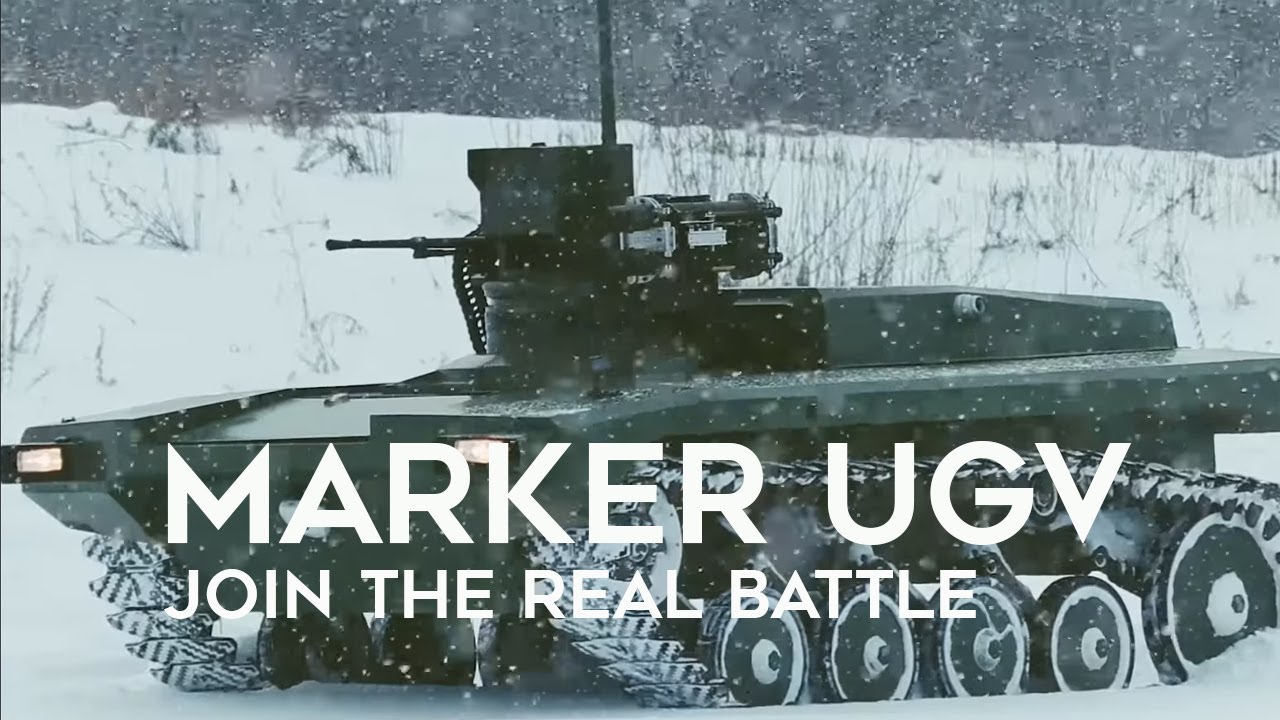Russia has prohibited the export of its ‘tank-killer’ Marker combat robot despite receiving interest from foreign countries regarding its procurement and co-production.
232 Times Greater Than US Navy, China’s Shipbuilding Prowess Eclipses The Might Of US – New Report
In an interview with state-run media agency RIA Novosti, Yevgeny Dudorov, the Executive Director of NPO Android Technology, the developer of the Russian military robot “Marker,” disclosed that several foreign nations have expressed a keen interest in acquiring and domestically producing the “Marker” robots.
While global interest in this combat robot has increased, Russia has upheld a stringent policy prohibiting the export of “Marker” robots, according to Dudorov.
The Marker, developed by Android Technologies and the Advanced Research Foundation, is an Unmanned Ground Vehicle (UGV) available in wheeled and tracked configurations.
This UGV came into the spotlight in February 2023 following Russia’s announcement of deploying these cutting-edge robots in the special operation zone located within Ukraine. Currently, only five Markers exist, and four of them were sent to the Donbas region.
Since then, Moscow has consistently reaffirmed its commitment to enhancing and refining the Marker robot’s technology to align with the ever-evolving requirements of the Russian military.
The combat iteration of the Marker robot boasts an electronic catalog within its control system, featuring images of targets encompassing both the visible spectrum and the infrared spectrum. Consequently, the robot can autonomously identify and categorize enemy equipment.
In terms of its physical appearance, the Marker resembles a tank. It can be outfitted with various sensors and armaments, including a drone-launching housing and a turret housing machine guns and anti-tank missiles.
Furthermore, the manufacturer has plans to incorporate a specialized BAS-80 kamikaze drone, specifically designed to be compact and seamlessly compatible with the Marker robot.
The BAS-80 drone, devoid of any warhead, weighs approximately 1.7 kilograms. It can also accommodate a warhead with a capacity of roughly 600 grams, which can be further expanded if required.
Moreover, the developers of the Marker robot assert that their robotic platform boasts the most advanced autonomous capabilities, particularly in terms of navigating unfamiliar terrain and employing artificial intelligence technologies to identify objects.
Meanwhile, experts believe that given the limited fleet of Marker vehicles currently available, characterizing these Unmanned Ground Vehicles (UGVs) as potential “tank killers” is likely more of a public relations gesture than a practical operational capability.
Why Is Russia Not Allowing Export Of Marker Robots?
Dudorov explained that Russia has a deliberate policy of not procuring foreign technologies and refraining from sharing its own, despite frequent requests from other parties interested in the Marker robot.
He highlighted that, as of the current moment, the Marker robot has not been formally delivered to the Russian military.
However, certain countries already have considerable interest in undertaking large-scale production of the Marker independently, with a focus on localized manufacturing. Dudorov emphasizes Russia’s cautious approach to safeguarding the technology behind the Marker robot.
As per Dudorov, the company is presently engaged in consultations with the Federal Service for Technical and Export Control and the Ministry of Industry and Trade.
These consultations aim to clarify the government’s stance regarding the potential export of the Markers.

He further stated that if the opportunity to export these robots becomes available, the company will proceed through Rosoboronexport (Russia’s sole state intermediary agency for Russia’s exports/imports of defense-related products) or the Chamber of Commerce and Industry to facilitate the export process.
The company’s representative did not specify the countries that have expressed interest in acquiring and producing the advanced Unmanned Ground Vehicle (UGV). Additionally, the performance of these robots in Ukraine remains unknown and has not been disclosed.
Russia has a longstanding tradition of utilizing the battlefield as a testing ground for new military technology. In this context, the Russian military had previously deployed the Uran-9 Unmanned Ground Vehicle (UGV) in Syria in 2018.
However, the weapon-equipped vehicle encountered numerous issues, including a limited operational range of 300 to 500 meters, frequent mechanical failures, and instances where human operators lost control.
These problems were so significant that even Russian defense officials acknowledged that the Uran-9 could not fulfill its designated tasks.
Nevertheless, despite these challenges, the Uran-9 was officially adopted by the Russian military and even deployed in Ukraine.
- Contact the author at ashishmichel(at)gmail.com
- Follow EurAsian Times on Google News




